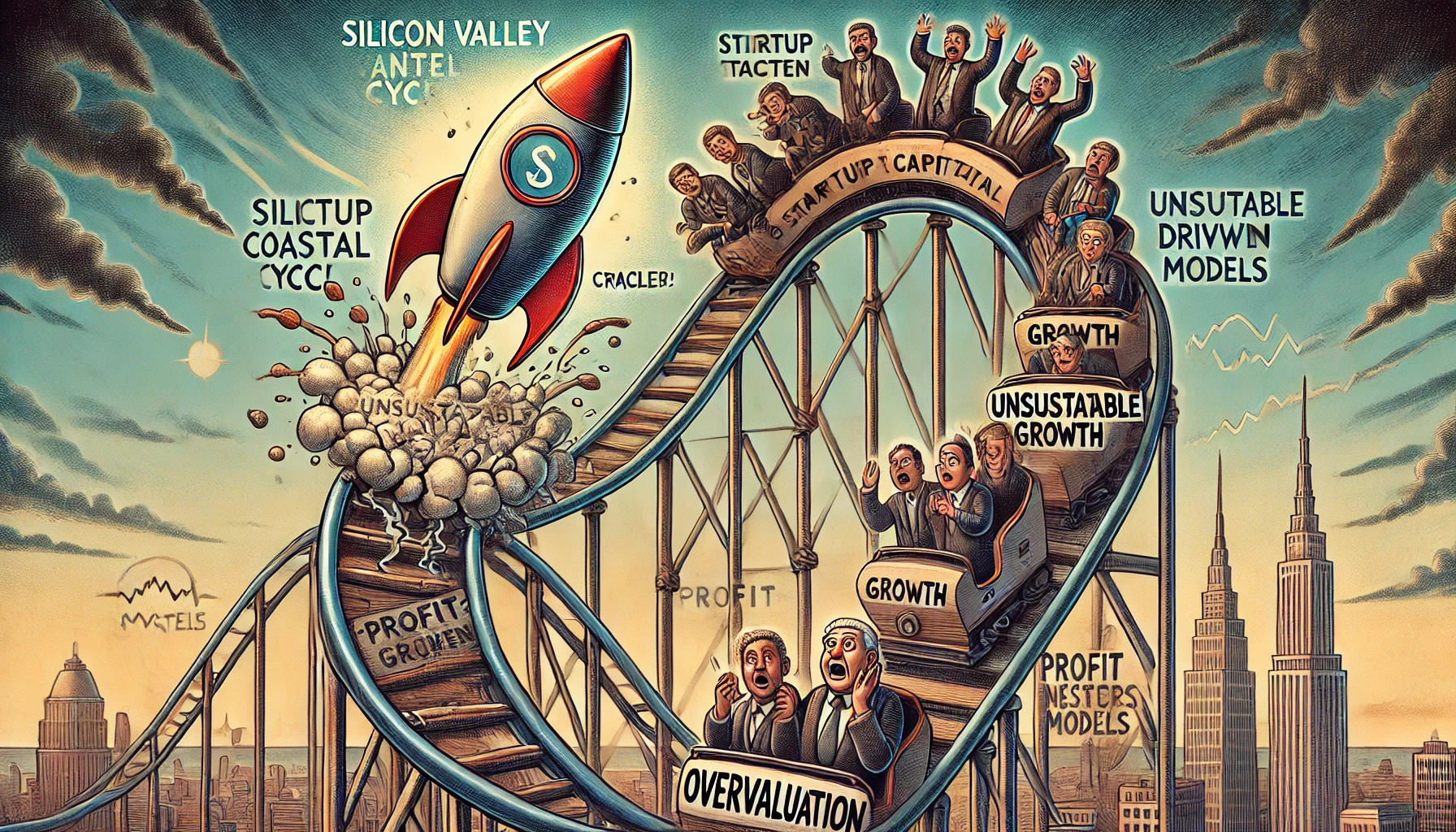The Silicon Valley investor “scheme” – if we use that term loosely – works by creating the illusion of continuous growth and increasing valuations, often without corresponding fundamental business performance. This can happen at each funding round as venture capitalists (VCs) push startups to inflate metrics, acquire users unsustainably, and prioritize hype over real revenue.
The model revolves around 5 stages that has nothing to do with “actual / profitable growth” but rather founded on inflammatory valuation hype at each round.
Here’s how it unfolds at each stage:
1. Seed Stage (Angel Investors & Pre-Seed)
- The startup raises a small amount of capital (e.g., $500K–$5M) from angel investors, accelerators, or early-stage VCs.
- Founders focus on a compelling narrative, selling the vision of a billion-dollar market opportunity.
- Investors don’t expect profitability – only a strong team, a “disruptive” idea, and early traction.
- The valuation is arbitrary and based on market hype rather than financials.
The Red Flag: Founders may exaggerate potential market size, product readiness, or early user adoption to secure funding.
2. Series A ($10M–$30M)
- VCs look for rapid growth, usually in users, revenue, or both.
- Startups burn through seed money on aggressive customer acquisition, often at a loss.
- Unit economics (profit per customer) are often ignored in favor of top-line growth.
- Founders present inflated projections to justify a 5x – 10x increase in valuation.
The Red Flag: Growth at any cost – many users are acquired through unsustainable spending (e.g., giving away free products, spending $2 to make $1).
3. Series B ($30M–$100M)
- More institutional VCs enter, bringing in larger checks and demanding bigger growth.
- The company often shifts focus from product-market fit to scaling up operations.
- Financials remain secondary to user growth and valuation inflation.
- Some startups engage in financial engineering (e.g., reclassifying revenue, using tricky accounting to appear stronger).
The Red Flag: Companies start acquiring competitors using VC money instead of achieving organic growth, making it seem like they are growing faster.
4. Series C and Beyond ($100M–$500M)
- Late-stage VCs and hedge funds invest, pushing for massive valuations ($1B+ unicorn status).
- The company often resorts to:
- Expanding into unsustainable markets.
- Laying off employees to “cut costs” while maintaining high spending elsewhere.
- Engaging in accounting tricks (e.g., booking revenue early, delaying expenses).
- Expanding into unsustainable markets.
- Valuations may hit $10B+, despite no clear path to profitability.
The Red Flag: Investors in earlier rounds push for an “exit” by hyping the company for an IPO or acquisition, even if it’s fundamentally unprofitable.
5. IPO (Public Exit Strategy)
- The company goes public, selling shares to retail investors.
- The narrative shifts from VC-backed hype to Wall Street storytelling (e.g., “Amazon lost money for years, so we can too”).
- Founders, early employees, and VCs cash out at the IPO, often making millions or billions.
- The stock price soars initially due to demand from retail investors who buy into the hype.
- Reality sets in: profitability issues, slowing growth, or accounting irregularities emerge.
- The stock crashes 50–90%, leaving retail investors holding the bag.
The Red Flag: Founders and VCs dump their shares as soon as the lock-up period ends—a sign they never believed in long-term sustainability.
Endgame: Who Wins and Who Loses?
✅ Winners:
- Founders (if they cash out early).
- Early-stage investors (Seed, Series A).
- Investment bankers & IPO underwriters.
❌ Losers:
- Late-stage VCs who bought at inflated valuations.
- Employees who were paid in stock options (worthless if the stock crashes).
- Retail investors who bought the IPO hype.
Famous Examples of filed companies.
- WeWork: Raised billions, inflated its valuation to $47B, IPO failed, stock collapsed.
- Theranos: Claimed revolutionary blood testing; turned out to be fraudulent.
- Peloton, Robinhood, Blue Apron, etc.: Sky-high IPOs, stock collapses within a year.
Silicon Valley isn’t a literal investor “scheme”, but many startups follow this cycle where each investment round requires bigger fools to buy in at higher valuations. If a real, sustainable business never emerges, the last investor(s) and retail shareholder(s) are left holding the bag.





Leave a Reply